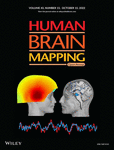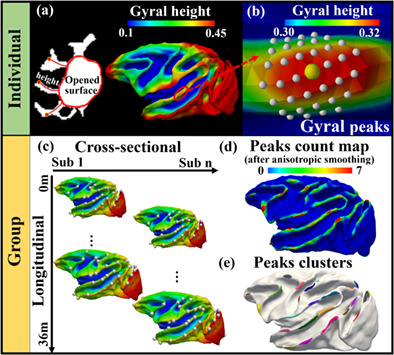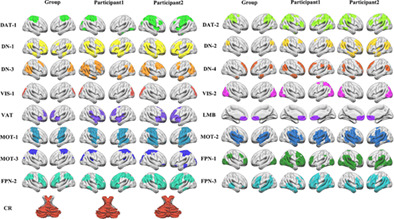Journal list menu
Export Citations
Download PDFs
COVER IMAGE
Cover Image
- First Published: 21 September 2022

COVER ILLUSTRATION Whether magnetoencephalography (MEG) is able to record the activity of deep structures such as the hippocampus remains an open question in neuroscience. López-Madrona et al. combined blind source separation methods on MEG with simultaneous intracerebral recordings to identify hippocampal and rhinal cortex activity and disentangle it from other cortical sources. This image reflects the strong correlation between the signal obtained by MEG and the time course of deep structures recorded with intracerebral electrodes.
ISSUE INFORMATION
RESEARCH ARTICLES
Early alterations in cortical morphology after neoadjuvant chemotherapy in breast cancer patients: A longitudinal magnetic resonance imaging study
- Pages: 4513-4528
- First Published: 04 June 2022
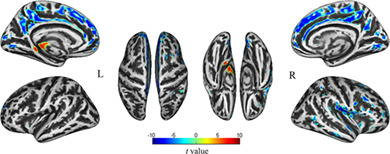
- Early morphological alterations induced by chemotherapy in breast cancer patients are unclear. In this longitudinal study, we compared female breast cancer patients (n = 45) longitudinally before and after the first cycle of neoadjuvant chemotherapy, using voxel-based morphometry (VBM) and surface-based morphometry (SBM). The affected brain regions are consistent with those associated with impaired cognitive domains in previous studies.
Hemispheric functional segregation facilitates target detection during sustained visuospatial attention
- Pages: 4529-4539
- First Published: 13 June 2022
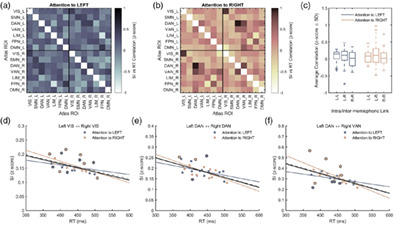
Lateralization of spatial attention is well documented in healthy and diseased states (e.g., attention deficit disorders), but we only marginally understand the neural mechanisms underlying the relationship between functional asymmetries and behavior. We show that task performance, as measured by faster target detection response times during covert visuospatial attention, is higher when there is lower interhemispheric connectivity, that is, when the dominant right hemisphere remain functionally segregated from the left hemisphere.
Gyral peaks: Novel gyral landmarks in developing macaque brains
- Pages: 4540-4555
- First Published: 17 June 2022
Nonlinear functional network connectivity in resting functional magnetic resonance imaging data
- Pages: 4556-4566
- First Published: 28 June 2022
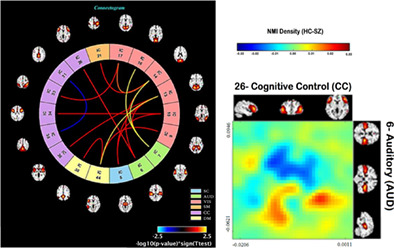
In this work, we focus on explicitly nonlinear relationships in functional networks. We introduce a normalized mutual information (NMI) technique that calculates the nonlinear relationship between different brain regions. Also, we propose a method that captures both linear and nonlinear effects in a “boosted” approach. This method increases the sensitivity to group differences compared to the standard linear approach, at the cost of being unable to separate linear and nonlinear effects.
Attenuated brain white matter functional network interactions in Parkinson's disease
- Pages: 4567-4579
- First Published: 08 June 2022
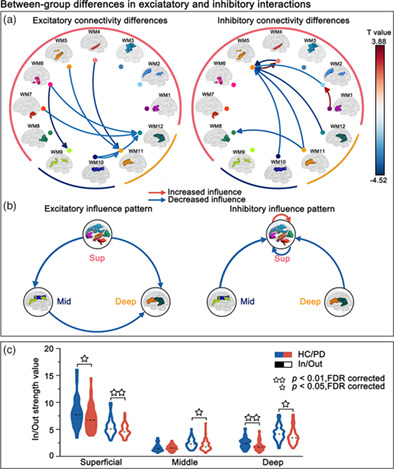
We found that the deep white matter functional networks associated with basal ganglia have extensive abnormal interactions with other networks in PD. Furthermore, disrupted interactions of the deep networks were significantly associated with motor and nonmotor symptoms in PD. These findings suggest that informational interactions among the white matter functional networks in PD appear interrupted relative to healthy individuals.
Peri-ictal hypoxemia during temporal lobe seizures: A SEEG study
- Pages: 4580-4588
- First Published: 15 June 2022

Focal seizures originating from the temporal lobe are commonly associated with peri-ictal hypoxemia (PIH). Peri-ictal hypoxemia is associated with a strong involvement of amygdala and anterior insula during seizure propagation and a more widespread involvement of medial and lateral temporal lobe, temporal pole and frontal lobe at the end of the seizures.
The role of the ventrolateral anterior temporal lobes in social cognition
- Pages: 4589-4608
- First Published: 18 June 2022
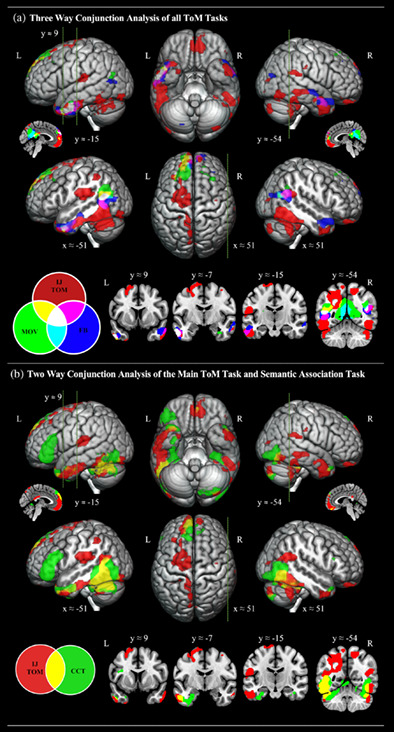
A key challenge for neurobiological models of social cognition is to elucidate whether brain regions are specialised for that domain. We used ATL-optimised fMRI to map the contribution of different ATL structures to a variety of paradigms frequently used to probe ‘theory of mind’, as well as a non-social task probing semantic representations. We provide novel evidence in support of the view that the ventrolateral ATL contributes to social cognition via a domain-general role in semantic processing and against claims of a specialised social function.
Allometry in the corpus callosum in neonates: Sexual dimorphism
- Pages: 4609-4619
- First Published: 20 June 2022
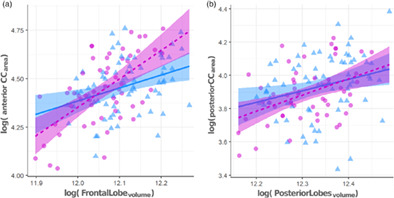
In adults, corpus callosum (CC) size shows a robust allometric relationship with brain size, with larger brains having larger callosa, but smaller brains having larger callosa relative to brain size. Such an allometric relationship has been shown in both males and females, with no significant difference between the sexes. But there is some evidence that there are alterations in these allometric relationships during development. Our results indicate that there are already sex differences in these allometric relationships in neonates: male neonates show the adult-like allometric relationship between CC size and brain size; however, female neonates show a significantly more positive allometry between CC size and brain size than either male neonates or female adults.
A comparison of intracranial volume estimation methods and their cross-sectional and longitudinal associations with age
- Pages: 4620-4639
- First Published: 16 June 2022
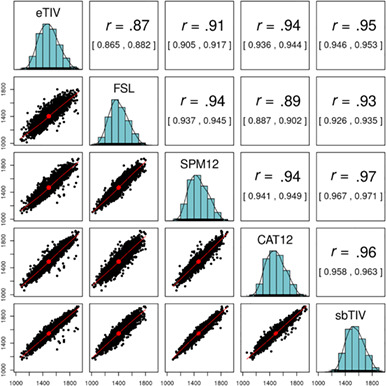
The choice of ICV estimation method is a possible source of bias, both in studies investigating ICV as a variable of interest and as an adjustment factor. In particular, the detection of associations with age may differ between ICV estimation methods and ICV estimates may be biased by head size, body weight, age, and sex. While cross-sectional age associations may be partially explained by cohort differences, the convergence of longitudinal reductions for all ICV methods offers strong evidence for age-related reductions in mid- to late adulthood.
Evaluating denoising strategies in resting-state functional magnetic resonance in traumatic brain injury (EpiBioS4Rx)
- Pages: 4640-4649
- First Published: 20 June 2022

In this study, we evaluated denoising strategies in traumatic brain injury patients from the EpiBioS4Rx trial. While no pipeline eliminated noise effects on functional connectivity, some pipelines exhibited relatively high effectiveness depending on the exclusion regime; pipelines combining spike regression with physiological regressors were the best performers. We provide a framework and guidelines for fMRI research in traumatic brain injury.
Voxel-wise intermodal coupling analysis of two or more modalities using local covariance decomposition
- Pages: 4650-4663
- First Published: 22 June 2022
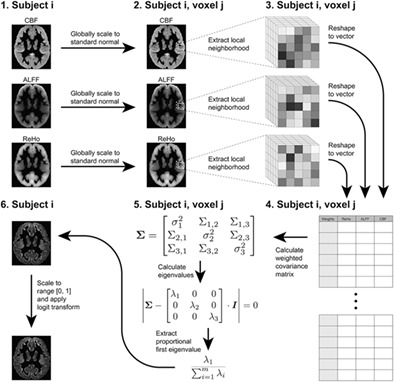
Multi-modal neuroimaging datasets contain information within modalities and between them. Here, we developed a method for studying relationships between more than two modalities at a local scale and found intermodal coupling of cerebral blood flow, resting-state fluctuations, and local connectivity is spatially heterogeneous and varies throughout neurodevelopment in discrete regions with age and sex. This method reveal patterns unique to those in individual modalities alone and can enable future advancements in our understanding of the brain.
Effects of a single-dose methylphenidate challenge on resting-state functional connectivity in stimulant-treatment naive children and adults with ADHD
- Pages: 4664-4675
- First Published: 04 July 2022
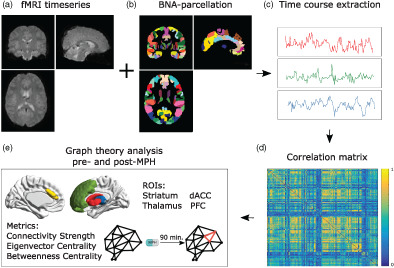
We investigated the effects of the stimulant methylphenidate on functional connectivity in stimulant-treatment naïve children and adults with ADHD, as well as typically developing controls. We found that methylphenidate modulated connectivity metrics primarily in the striatum and thalamus, with little effect on frontal regions. Importantly, opposing effects were found on network connectivity in children and adults in subcortical regions, possibly due to maturation of the dopamine and noradrenaline neurotransmitter systems. As such, our results increase our understanding of the effects of stimulants on brain networks in ADHD and stress the importance of taking a developmental perspective.
Abnormal functional connectivities patterns of multidomain cognitive impairments in pontine stroke patients
- Pages: 4676-4688
- First Published: 30 June 2022
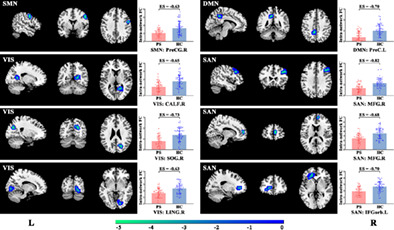
Infratentorial stroke disrupts functional network connectivities across the whole brain and affects multidomain cognition. Pontine stroke patients have decreased functional connectivities within the primary perceptual and higher cognitive control networks, and increased functional connectivities between the primary perceptual and higher cognitive control networks. The dysfunctional connectivity of the primary perceptual and higher cognitive control networks may be attributable to the neural substrates of multidomain cognitive deficits in pontine stroke patients.
Sex differences in predictors and regional patterns of brain age gap estimates
- Pages: 4689-4698
- First Published: 05 July 2022
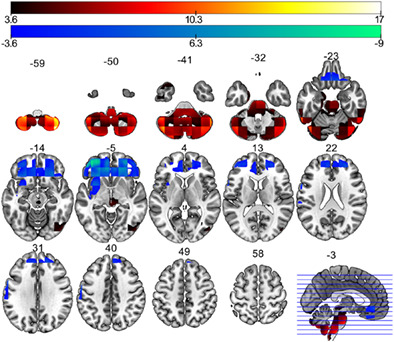
In this study machine learning was used to examine sex differences in global and localized brainAGE and their non-imaging correlates in healty young adults from the Human Connectome Project. Males and females showed different regional patterns of brain ageing which were influenced by different non-imaging characteristics. These results demonstrate the value of applying sex-specific analyses and machine learning methods to advance our understanding of factors that influence the rate of brain ageing.
Abnormal white-matter rich-club organization in obsessive–compulsive disorder
- Pages: 4699-4709
- First Published: 23 June 2022
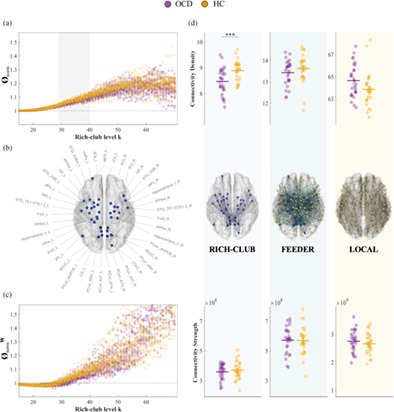
The present study investigates rich-club organization and rich-club connectivity as potential markers of OCD, by using probabilistic tractography to reconstruct the white-matter network of a group of unmedicated OCD patients. Our results suggest weaker structural connectivity between rich-club nodes in OCD patients, possibly resulting in lower network integration in favor of higher network segregation.
Prediction of childhood maltreatment and subtypes with personalized functional connectome of large-scale brain networks
- Pages: 4710-4721
- First Published: 23 June 2022
Cofluctuation analysis reveals aberrant default mode network patterns in adolescents and youths with autism spectrum disorder
- Pages: 4722-4732
- First Published: 04 July 2022
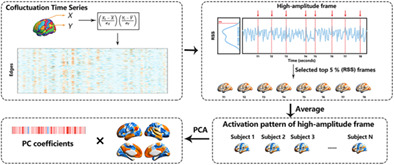
The present study used cofluctuation method to decompose the functional connections into their exact frame-wise contributions and observed the aberrant DMN pattern and overly stable dynamic properties in adolescents and youths with ASD. Our finding highlights the utility of cofluctuation approaches in prevalent neurodevelopmental disorders and verifies that the aberrant characteristics of DMN may underline the symptomatology in participants with ASD.
Magnetoencephalography can reveal deep brain network activities linked to memory processes
- Pages: 4733-4749
- First Published: 29 June 2022

Using blind source separation methods on MEG data, we obtain one BSS-MEG component with a deep topography and a strong response during a memory task. Thanks to simultaneous intracerebral EEG and MEG recordings, we found that this component corresponds to a network composed by the hippocampus and the rhinal cortex.
Reinforcement learning with associative or discriminative generalization across states and actions: fMRI at 3 T and 7 T
- Pages: 4750-4790
- First Published: 21 July 2022
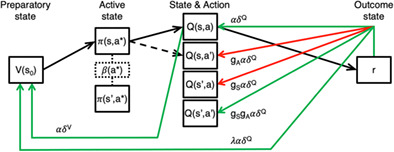
This “generalized reinforcement learning” (GRL) model, a frugal extension of RL, parsimoniously retains the single reward-prediction error (RPE), but the scope of learning goes beyond the experienced state and action. Aided by structural information but as an implicit rather than explicit cognitive map, GRL provided the most precise account of human behavior and individual differences in a reversal-learning task with hierarchical structure that encouraged inverse generalization across both states and actions. With high-resolution high-field fMRI targeting the dopaminergic midbrain, the GRL model's RPE signals (alongside value and decision signals) were localized within not only the striatum but also the substantia nigra and the ventral tegmental area, including specific effects of generalization that also extend to the hippocampus.
Deep brain stimulation of the ventrointermediate nucleus of the thalamus to treat essential tremor improves motor sequence learning
- Pages: 4791-4799
- First Published: 06 July 2022
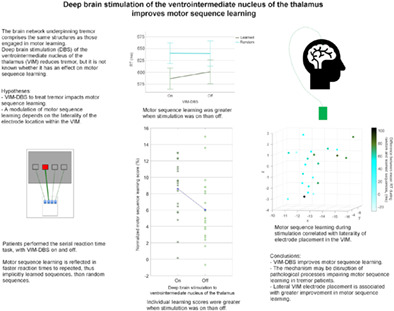
Motor sequence learning enables activities like playing the piano without conscious thought. Tremor engages similar brain structures to those supporting motor learning. Stimulation of the ventrointermediate nucleus of the thalamus is effective in treating tremor, and we demonstrate that it also improves motor sequence learning, with greater performance modulation when the stimulating electrode is more lateral.




